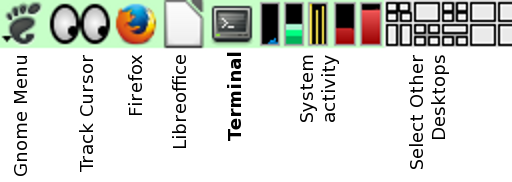Linux Terminal Basics
|
I use the Terminal for many things, because it is powerful and quick, and has evolved for 50 years into something pretty stable. What I am actually using is the Terminal program to display on the Gnome desktop, with the "bash shell" running inside it. |
Help commands:
man commandname - - - display (in text) manual page for a command
info commandname - - - formatted manual, sometimes more informative
apropos search text - - - looks for a man page that does something. Primitive and too much useless crap
websearch - - look for the command with a search engine. 90% of what you encounter will be useless crap, if something is useless, go to the next search result.
Where is stuff?
ls - list contents of directory
df - list the file systems ( an automatically mounted USB key is a file system
vi editor
USB keys
USB keys typically automount (they usually show up with df). They are also faster reading and much slower writing. Don't just remove them when done, click the desktop USB icon and then "remove safely". Because they are slow writing, they may need minutes to finish writing a big file. If you pull them out without safe removal, they lose power and can get messed up.
Notes
bash = "borne again shell" written by Stephen Borne, to replace csh (C shell), "bsh" (B shell), and "sh" (original shell). These are all programs that manage text in the terminal, execute user commands, and display results.

